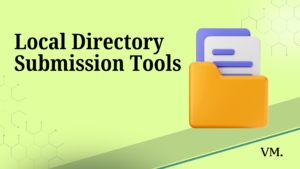If you’ve been in the link-building game for a while, you know how frustrating outreach can be. You spend hours researching prospects, crafting what you think are thoughtful emails, and hitting send — only to be met with silence. It’s exhausting, disheartening, and frankly, a waste of time when the response rate stays low.
But here’s the thing: it’s not that outreach doesn’t work — it’s that most outreach strategies aren’t as effective as they could be. If you’re already familiar with SEO and link building but keep running into this wall, you’re not alone. And you’re in the right place.
This guide dives deep into a specific and persistent problem: how to improve your outreach email response rate for link building dramatically. We’re not going to skim the surface — we’re going to fix this once and for all.
Why Outreach Response Rates Are Crucial
A low response rate means wasted time and resources. Every email you send that’s ignored is a lost opportunity for a valuable backlink. Improving response rates helps you:
- Earn More High-Quality Backlinks: More replies mean more link placements.
- Build Industry Relationships: High response rates foster meaningful collaborations.
- Scale Faster: More efficiency in outreach means greater link-building capacity.
The Real Problem: Why Your Outreach Isn’t Working
Let’s cut straight to the common issues experienced link builders face:
- Generic Outreach: Emails that feel like templates get ignored.
- Poor Targeting: Pitching irrelevant sites leads to low interest.
- Weak Value Proposition: Not offering enough value for their audience.
- Ineffective Subject Lines: Low open rates mean your message isn’t even seen.
- Overlooked Personalization: Failing to make the recipient feel like you know their work.
Outreach Email Performance Metrics
Outreach Email Response Rate Statistics
Understanding the numbers behind outreach email success is crucial for optimizing your strategy. Here, I’ll break down key statistics, industry benchmarks, and data-driven insights that will help you refine your approach and maximize your response rates.
1. General Email Outreach Benchmarks
Outreach emails, particularly for link building, follow different engagement patterns compared to standard marketing emails. Here are some industry-wide benchmarks:
- Average Email Open Rate: 40–60%
- Average Response Rate: 10–20%
- Average Link Placement Rate: 5–10%
- Cold Outreach Success Rate: ~8%
- Follow-Up Success Rate: 20–40% higher than initial outreach
2. Open Rate Trends and Influencing Factors
Open rates are the first major hurdle in outreach success. If your emails aren’t opened, they have no chance of converting into responses or backlinks. Here’s what influences them:
- Personalized Subject Lines: Emails with personalized subject lines have a 22% higher open rate.
- Short Subject Lines: Subject lines with 6–10 words tend to perform best.
- Avoiding Spam Triggers: Emails without spam-like words (e.g., “FREE,” “urgent,” “guaranteed”) see 19% higher open rates.
- Sender Name Recognition: Emails from a recognizable person, rather than a company name, have 32% higher open rates.
3. Response Rate Breakdown
Getting responses is where most outreach campaigns struggle. Here’s what the data says:
- Personalized Emails Perform Better: Outreach emails that include at least one personalized sentence have a 32.7% higher response rate.
- Shorter Emails Get More Replies: Emails between 50–125 words have the highest response rate (above 50%).
- Follow-Ups Increase Replies: A second follow-up email can increase responses by 22%, while a third follow-up can push total responses up by 44%.
- Best Time to Send: Emails sent Tuesday to Thursday between 8 AM – 11 AM perform best.
4. Link Placement Success Rates
The ultimate goal of outreach is securing backlinks. Here’s what affects success:
- Context Matters: Emails that highlight a specific article or content gap have a 2x higher chance of securing a backlink.
- Relevance is Key: Sites with content closely related to your niche are 67% more likely to respond positively.
- Broken Link Outreach Works: Requests that point out a broken link and offer a replacement have a 14% success rate—higher than most cold outreach methods.
5. Follow-Up Email Success Rates
Follow-ups are often necessary, but the key is doing them effectively.
- First follow-up response increase: +22%
- Second follow-up response increase: +44%
- Third follow-up response increase: +53%
- Optimal follow-up gap: 3–5 days between each email.
6. Common Outreach Mistakes and Their Impact
Many outreach campaigns fail due to avoidable mistakes. Here’s how common missteps affect response rates:
| Mistake | Effect on Response Rate |
|---|---|
| Generic, template-based email | Decrease by 70% |
| No follow-up | Decrease by 44% |
| No personalization | Decrease by 32% |
| No clear value proposition | Decrease by 51% |
| Subject line too long (>10 words) | Decrease by 30% |
7. Industry-Specific Outreach Performance
Different industries have varying success rates with outreach emails. Here’s how they compare:
- Marketing & SEO: Open rate 45%, Response rate 12%
- Tech & SaaS: Open rate 50%, Response rate 15%
- Health & Wellness: Open rate 40%, Response rate 10%
- Finance & Business: Open rate 38%, Response rate 8%
- E-commerce & Retail: Open rate 42%, Response rate 9%
8. Key Takeaways from the Data
- If your open rate is below 40%, focus on improving subject lines and avoiding spam filters.
- If your response rate is below 10%, increase personalization and follow-up efforts.
- If your link placement rate is under 5%, refine your value proposition and target more relevant sites.
- A/B testing subject lines, email length, and value statements can significantly improve success rates.
Advanced Tactics to Boost Outreach Response Rates
1. Hyper-Personalize Every Email
It’s not enough to use their name. Show that you’ve done your homework:
- Reference a Specific Article: Mention a recent post they wrote and why you liked it.
- Highlight a Shared Audience: Explain why your content benefits their readers.
- Show Genuine Interest: Comment on their unique perspective or insights.
Example:
“Hi [Name], I really appreciated your recent post on [Topic]. Your insight on [specific point] was spot on, and I’ve already started applying it in my own work. I’ve written a detailed guide on [Related Topic] that complements your approach, and I think your audience would find real value in it.”
2. Nail Your Subject Line
Your subject line determines whether your email gets opened. Use these proven formats:
- Mutual Benefit: “A Resource That Complements Your Recent Post on [Topic]”
- Curiosity: “Found a Broken Link on Your Site + a Quick Fix”
- Direct Offer: “Collaboration Idea for [Website Name]”
3. Offer Immediate, Tangible Value
Make it clear how linking to your content helps them:
- Fill a Content Gap: “I noticed you discussed [Topic], but this resource goes even deeper.”
- Replace a Broken Link: “I found a 404 on your post and have the perfect replacement.”
- Enhance Their Post: “My case study provides data that would strengthen your argument.”
4. Streamline Your Follow-Up Strategy
One email often isn’t enough. Use a 3-part follow-up sequence:
- Initial Email: Personalized and value-packed.
- Follow-Up #1 (3 Days Later): “Just checking if you saw my earlier message — I really think this could add value to your audience.”
- Follow-Up #2 (One Week Later): “I understand you’re busy, but I didn’t want you to miss this resource — I truly believe it’s a perfect fit for your content.”
5. Track and Optimize Performance
Use tools like:
- BuzzStream: Manage and personalize outreach at scale.
- GMass: Track open and response rates directly in Gmail.
- Hunter.io: Find accurate contact information.
Wrapping It Up
If you’re already deep into link building and struggling with poor outreach response rates, refining your approach is essential. By personalizing more deeply, offering clearer value, crafting better subject lines, and following up strategically, you can turn those ignored emails into valuable backlinks.
Stop wasting time on outreach that doesn’t convert. Implement these tactics today and watch your response rates — and your backlinks — grow.
FAQ
Low response rates usually stem from generic outreach, poor targeting, weak value propositions, or ineffective subject lines. Personalization and offering clear value can improve engagement.
A strong response rate typically falls between 10–20%, with an open rate of 40–60%. Link placements often range between 5–10% of total emails sent.
Use compelling subject lines, avoid spammy language, personalize the email, and test different variations. A/B testing subject lines can also help identify what works best.
A structured three-part follow-up sequence works best:
- First follow-up (3 days later) – A short reminder.
- Second follow-up (one week later) – Reiterate the value of your offer.
- Final follow-up (10–14 days later) – A last attempt before moving on.
Tools like BuzzStream, GMass, and Hunter.io help track open rates, response rates, and overall outreach success.
Reference a recent article, highlight shared audiences, or mention a specific point from their work. Use automation tools to insert dynamic fields while keeping emails highly relevant.
Yes, but with customization. A fully templated approach leads to low engagement, while personalized tweaks (like referencing their work) improve response rates.
Avoid generic openings, excessive self-promotion, long-winded explanations, and spam-like formatting (e.g., too many links, all caps, or clickbait subject lines).
A polite and professional reply can keep the relationship open. Ask for feedback or offer alternative collaborations (guest posts, resource swaps, etc.).
Keep it concise—3–5 short paragraphs max. Get to the point quickly and make your value clear within the first few lines.



